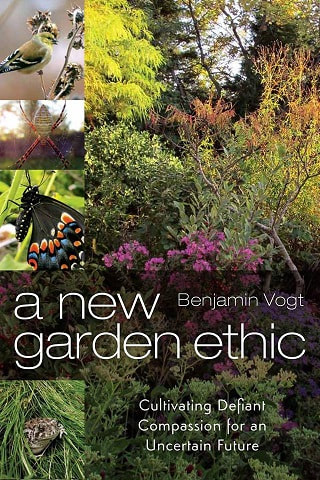Plant Community
A plant community is a community of plants. Oh, did you want more clarification as it applies to garden design and management? Ok then. A plant community is a community of plants where each plant is able to fulfill its natural abilities and characteristics, within its garden niche, without being marginalized or marginalizing other plant species within the garden. What this boils down to is that no plant is so aggressive it takes over, but also that no plant is so behaved it fades out of the landscape due to other plants taking over.
A plant community is both mutually supportive and mutually combative. In the wild plants jockey and tussle for resources -- what we see in a meadow, for example, isn't balance so much as it is a blood-thirsty fight for water, sunlight, and soil nutrients. The plants in that wild community are all filling their roles: some are early colonizers, some take years to bloom, some are aggressive, some are behaved clumps, some are groundcovers, some like to have part shade of taller plants around them, et cetera.
So a plant community in a garden setting is an assemblage of plants that "work together" to foster a variety of ecosystem services, from habitat to erosion control to whatever goals we have that plants can help fulfill. The plants we've selected work together because we've researched their behaviors, from reproduction methods to bloom time and color and mature size, while also managing the space to curate the continuity of the community as it evolves and ages.
Plant Community Components
We'll have groundcover plants, seasonal theme plants at various layers, and taller architectural plants (learn about these in the online class on layers). There will be plants that spread easily by seed or runners and some that tend to clump in tight masses only. Some will emerge early in the season, fade, and then later season plants will take over the show. There will be plants that thrive in the early years, called early-succession species, to stabilize the site and reduce weed competition, then they will give way to perennials that have finally rooted out and are ready to take over. There will be grasses and sedges and forbs, but also woody plants like shrubs and trees of various sizes -- all which together increase ecosystem services and provide dynamic habitat edges where wildlife thrive.
Most importantly, the plants in this community will have evolved and be adapted to the site conditions -- sun, soil, drainage, etc. They all come from the same wild conditions, and so we know they should work well together here in a replicated natural garden bed, even if the garden bed can never be as dynamic or lush or complex as the wild plant community. Remember, in a prairie or meadow there can be dozens of plant species in a square foot or square yard. In a garden, that's often impractical and -- from an aesthetic standpoint -- often undesirable (it would lead to a messier looking garden). However, the one place you can pack in plants that are critical to the health of the site, from weed control to habitat to increased soil moisture through soil shading, is the groundcover layer; and this is especially true if the ground layer becomes shaded to a good degree by taller plants. There are a plethora of species 12 inches tall or less that love shade or part shade, from sedge to geranium.
Plant Community Management
There are always additions you can make, and again, certainly in the ground layer. The showier seasonal theme layer -- forb species that take over the aesthetic flower show in various weeks of the growing season -- may require more careful intention. This intention is where massing and drifting come into play, if those species grow like that in the wild. For example, Asclepias tuberosa is more of a loner than a big drifter of 7 plants, however, Allium cernuum loves a long sweep or drag of 15-30 plant together (especially evident because it spreads primarily by creating new bulbs underground, whereas the Asclepias sets seed aloft in the wind to scatter all over the place). This is the kind of knowledge we need to have when selecting plants for a site and when matching them to one another. Plants aren't art to place on a shelf -- they are dynamic and responsive, which is a benefit to the gardener who doesn't want to be a helicopter parent to plants.
Over time, management will be primarily addition and subtraction once the initial garden bed has established and filled in. You'll notice plant succession, and which species may have adapted too well to the site. Often, a late winter or early spring cut down will be the biggest action to take. If the garden has a significant warm-season bunchgrass component, you may need to rake out fluff every 2 years or so to encourage forb seed germination (they need light hitting the soil surface) or, if you can, the occasional burn.
A dense plant community thrives on disturbance and shifting weather patterns and climate. The community shifts from year to year, with new surprises, just as in a wilder landscape. This dynamism is a benefit, as gardens are not static statues. The dynamic nature of living organisms means the garden -- if planted densely enough with good diversity -- can adapt more easily than a mow and blow bed with just a few species, dominated by wood mulch, with lots of open gaps susceptible to stress (weeds, drought, erosion, flooding, etc).
If you want to learn much more on how to create a natural garden based on dynamic plant communities, the book Prairie Up will help a lot -- as will the even more in-depth online video classes.



 RSS Feed
RSS Feed

